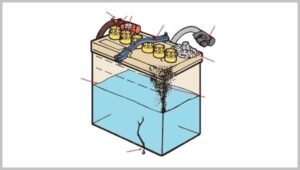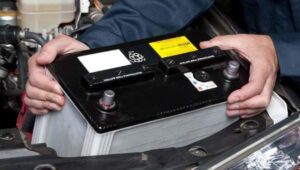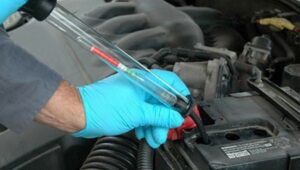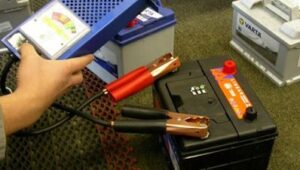Battery
A battery is the primary source of electricity on the vehicle when starting and for powering electrical devices while the engine is not running. The battery must be regularly inspected and maintained. A dead or lousy battery cannot start the engine.
Battery
During a regular inspection, irregularities can be noticed that are caused by poor conditions of exploitation on the vehicle or due to age. Testing determines the cause, which includes charging, troubleshooting, or replacing the battery.
Always wear safety glasses when working with batteries. When the battery is charged or discharged, it releases highly explosive hydrogen, while a certain amount of hydrogen is always present in the battery. An open flame or spark can ignite this gas, causing the battery to explode violently, spraying the acid over a wide area. Sulfuric acid can cause severe skin burns.
If the electrolyte contacts your skin or eyes, flush the area with water for several minutes. If eye contact occurs, open the eyelid and flush the eyes with an eyewash solution. Do not rub your eyes or skin, and call a doctor immediately.


















